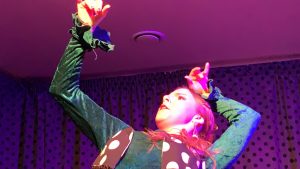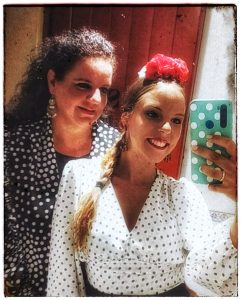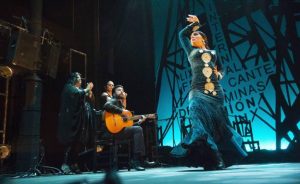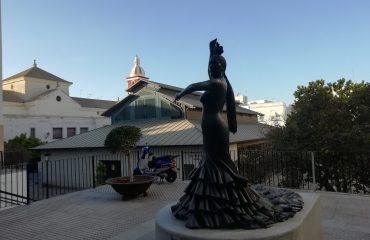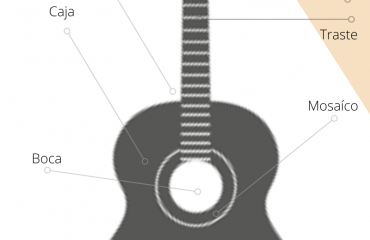Our Tablao Flamenco in Seville boasts of being of the few in which its performances are to “live voice” : without microphones and without speakers with which you can appreciate the purest forms of our art, authentic and passionate.
Si hay algún estilo es que esto se muestra patente es los “Tarantos”, así como por la fuerza y entrega que requiere su baile, como por la profundidad y entereza de la voz que deja atrás a la guitarra, que solo se expresa en el acompañamiento intimo que entrega el protagonismo al movimiento rasgado del taconeo.
La ausencia de elementos artificiales en nuestro Tablao Flamenco en Triana , ofrece la oportunidad de conocer este palo, en su más autentica expresión como lo cantan nuestros artistas de bandera, Juan Toro y Ana Fernandez
Juan offers us from home an introduction to singing by Tarantos that favors his compression by the humble origin from which he comes; townhouse in the misunderstanding and loneliness of work as hard as that of mines. We leave you with Juan is this video that we transcribe below
Greetings all you and welcome to this new video that aims to spread Flamenco and share this art with all of you.
Today we’re going to talk about a Palo del Flamenco, very intense and very beautiful as is the Cante de las Minas, the Cantes de Levante. These come from the eastern part of Andalusia and specifically it is a recreation of the mining songs,- this social class, this working class, humiliated exploited by a mescher salary-, where his life was played daily. Hence these songs have that lament and pain in all their expressions and, even in their lyrics.
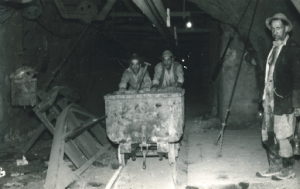
Minas de Almería
They come from these areas, although the crews of tarantos (of miners), were going to work elsewhere and therefore carried their cantes, – for example when they went to Murcia – and settled in. And there were born new styles of mining songs, such as: the miner, the murciana, the cartagenera, among others.
When- “to the best”-, they went to the area of Jaén or Cordoba, because they created new styles such as the tarantas of Linares. From there, they are born, but we have to go to the root of the matter that is in Levante, in Almería even if it also comes from the granada area…. who are burdened with purity, lament and pain throughout their structure and in their way of singing.
And today I wanted to share with you is the jewel of this necklace that is Flamenco. A necklace that is impressive, with many pearls but, that it also has its place and is born specifically in those sister provinces of Andalusia, as it is (are) Almería and Granada,
This is a very special blog that we wanted to pay homage to our customers, so we have taken videos that they themselves have recorded and hung on social networks. In this video, we can observe the memorable experience of enjoying flamenco in a place as intimate as the tablao de Pura esencia Calle Betis 56, in Seville.
It goes after you and we hope to have you soon in our city and in the heart of Triana
The Taranto over comes out of all these variants because it adds the compass to the style, which makes it more aavers to the dance and can be conceived as a spectacle. At the end of the nineteenth century, the Taranto began to show up at the Singing Cafes of the city of Almería, and then it was an extended piece in other shows in the country.
But if there is a figure who gave image to the dance of the taranto, it is Carmen Amaya, gypsy dancer, who from Barcelona and with her stylized presence and character in the dance, adopted it as hers, generating school
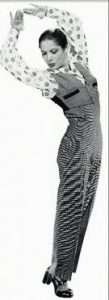
Carmen Amaya
The singing of the mines becomes an adult with the first celebration of the Festival de la Unión
in 1961. It is a prestigious Competition where artists are well known for their purity and follow-up to the guidelines of flamenco art while always standing out for giving the opportunity to new talents, with the prestigious award of the Lampara Minera
Queremos dar las gracias tanto a La Centuria como a nuestro amigo René por el material con el que hemos confeccionado este blog.
Blog patrocinado por:
Este blog ha sido realizado gracias a la colaboración de los artistas de Pura Esencia Flamenco y transcrito por Fernando Toro

